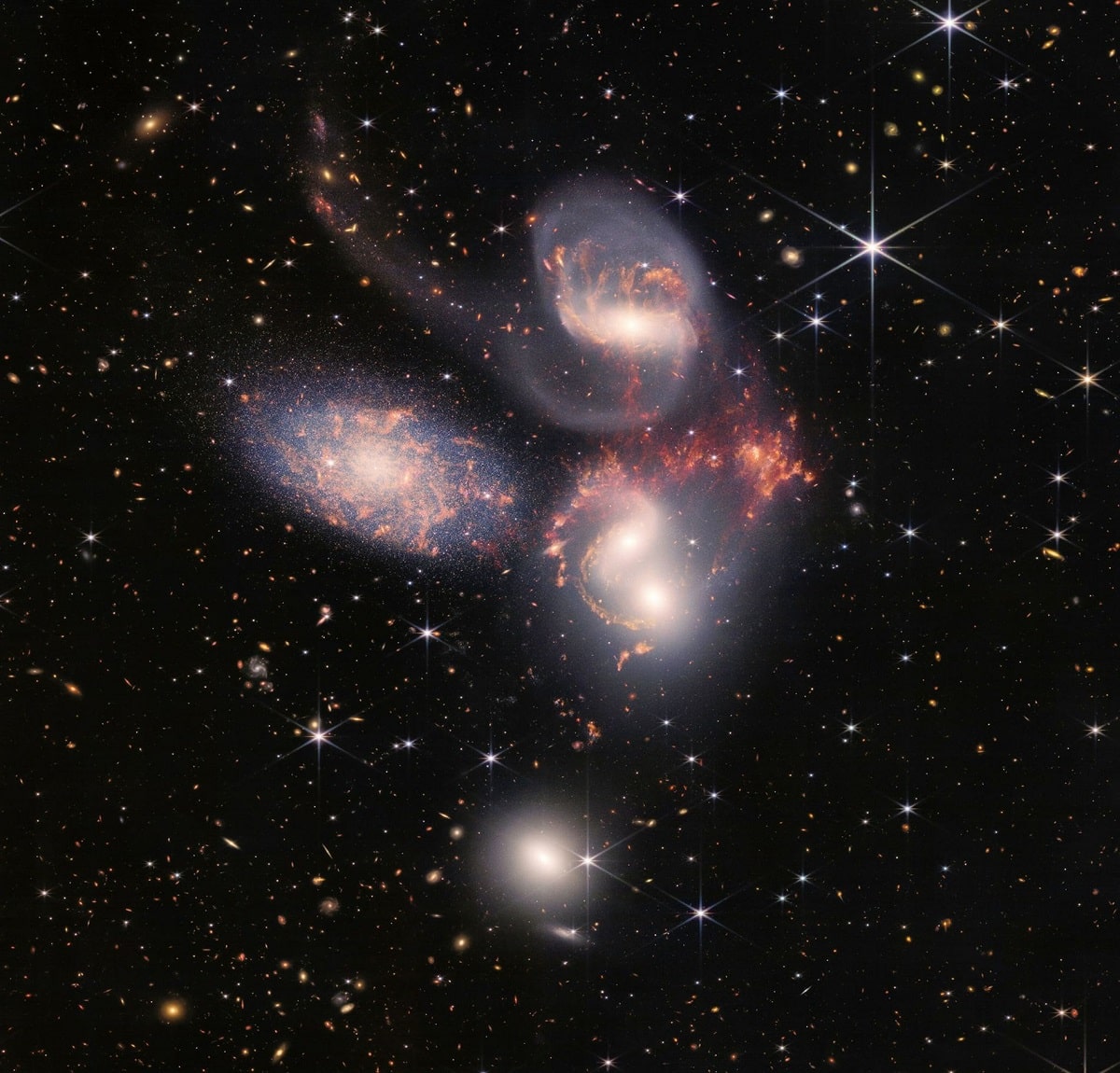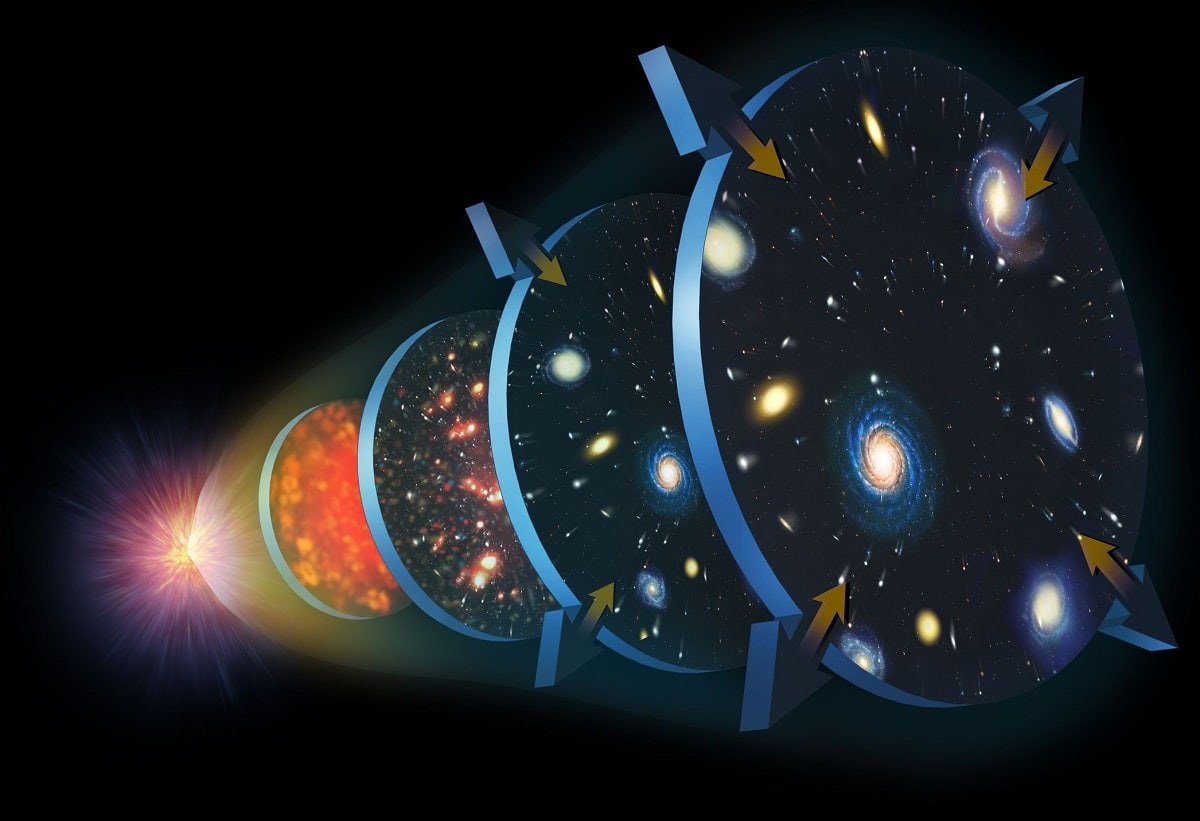
For thousands of years, our ancestors have gazed at the sky in bewilderment. From how crops grow to why we exist in this world and what happens when we leave. One of the most popular metaphysical questions is who or what started it all, i.e. how the universe was created. Over time, the scientific method has allowed us to address some of these questions. Crops grow because they get enough sunlight and nutrients from soil and water. The sky is blue because the waves travel through the atmosphere, and we get sick because microbes attack us. But how was the Universe created?
In this article we are going to tell you how the Universe was created and what was the origin of everything.
How the Universe was created: Big Bang theory

The most popular and widely accepted scientific theory is the Big Bang theory. As you may have read or heard, The Big Bang is the name given to the phenomenon that started everything that exists. According to this theory, the universe expanded rapidly from a very small and compressed initial state. But there is no real explosion, as the word "explode" would suggest.
Your brain explodes when you read: The universe has no center, because neither space nor time existed before the Big Bang, therefore the origin cannot be at a specific point. All we know is that the universe continues to expand and cool. Furthermore, we know that galaxies are moving away from each other, and they are moving faster and faster (we just discovered the farthest known galaxy to date). This means that there is something (invisible and undetectable) "pushing" them, which is what we know as dark matter. In fact, only 5% of the universe is ordinary matter (what makes up you, the Earth, and all visible structures in the universe), but 85% is dark matter and the remaining 10% is dark energy. That is, most of the universe is made up of things that we cannot see or understand.
The cosmic microwave background radiation is proof of the existence of the Big Bang. Discovered in 1965, it dates back to the universe "only 380.000 years". By measuring the signature of this radiation, the remnants of the Big Bang, we can calculate the approximate age of the universe (13.800 billion years).
How the Universe was created: Big Bounce theory

To the surprise of cosmologists, the universe is surprisingly flat and uniform. That is, instead of a chaotic distribution of matter and energy, everything seems to flatten out and distribute itself steadily, which means that there must be some phenomenon that contributes to it. This is where what physicists call inflationary epochs comes into play, a period during which this unification of matter and energy can occur, homogenizing the entire universe.
The inflation theory was proposed by Alan Guth in 1981 to try to explain what phenomena caused the Big Bang and the subsequent distribution of matter. But inflation also has its weaknesses, and some scientists don't think it's enough to explain the uniformity of the universe.
Another alternative to inflation, proposed by Princeton University physicist and professor Paul Steinhardt, is the so-called "Big Bounce", similar to a "Big Bounce". In an interview with the Institute of Theoretical Physics of the UAM/CSIC, Steinhardt explained that before the Big Bang there was an earlier systolic period. The universe folds back on itself and expands again, perfectly explaining properties previously only explained by inflation.
Theory of the circulating or oscillating universe

Roger Penrose's name may be familiar to you as he won the Nobel Prize in Physics in 2020. Penrose is currently one of the most researched scientists on the theory of the origin of the universe. He proposed a theory according to which the universe would go through periods of expansion and contraction in a cyclical way. So now we're going to go through an expansion. As explained in this article in The Conversation, the extreme contraction will be called the big contraction and will be "mathematically identical to the Big Bang," which will occur before the new expansion.
multiverse theory
One of the main problems physicists have in explaining the origin of the universe is that we don't have a quantum theory of gravity, the "theory of everything." In short, matter behaves differently on quantum scales (atoms, elementary particles) than it does on higher scales, and we still can't explain why this happens. On the quantum scale, a physical system exists in a superposition of several different states at the same time, only showing one of them at random when we measure it. The famous Schrödinger's cat dilemma explains it very well.
The multiverse theory may explain other problems that cosmologists have discovered to explain the origin of the universe. According to this theory, there would be a different set of universes, and ours is only a small part of the multiverse. For a theory of the multiverse to work, we must assume at least six dimensions (we only experience three), but some physical theories, such as string theory, a candidate for a "theory of everything," suggest that there will be at least ten dimensions at the same time. .
living in a simulation
Finally, there is a theory that has not been completely ruled out by the scientific community, that he could be living in a kind of Matrix.
For example, MIT cosmologist Max Tegmark claimed at a 2016 lecture honoring Isaac Asimov that the mathematical laws that govern the universe may actually be determined by us, the result of algorithms created by other agents, or even, to utter surprise of your brain, it was the humans themselves who created simulations at some point in the future to recreate the past.
It is also possible that other intelligent civilizations created this simulated universe as a research object, or just for fun. This last theory is probably the most controversial of all, and we have no proof that it can be true, although it cannot be completely ruled out.
I hope that with this information you can learn more about how the Universe was created and its theories.
The themes about the majesty of the UNIVERSE have been my favorite, since so much immensity and beauty make me daydream, observing galaxies, planets, stars, nebulae, meteorites, suns, etc... they make this knowledge something extraordinary that leads us to the origin of life. Regards